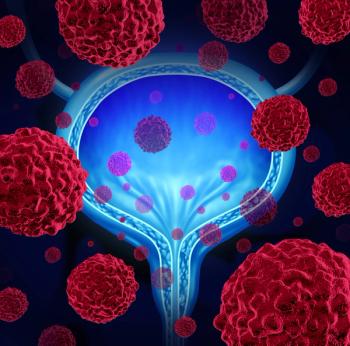
Photodynamic Diagnosis of Bladder Cancer With Oral 5-ALA Is Feasible, Safe
TURBT with fluorescent light source using oral 5-ALA is well tolerated in non–muscle-invasive bladder cancer.
Photodynamic diagnosis of non–muscle-invasive bladder cancer (NMIBC) is feasible using oral 5-aminolevulinic acid (5-ALA), and transurethral resection of bladder tumors (TURBT) using a fluorescent light source with 5-ALA rather than white light, is well tolerated, according to a new study.
Treatment of bladder cancer is determined heavily by a number of diagnostic factors. “Therefore, accurate diagnosis is essential for NMIBC management to reduce the recurrence and progression risk,” wrote study authors led by Kiyohide Fujimoto, MD, of Nara Medical University in Japan. “However, conventional TURBT under a white light source can fail to detect 4% to 41% of small papillary tumors, carcinoma in situ, multifocal growth, and microscopic lesions.”
The authors tested whether guiding TURBT by photodynamic diagnosis with 5-ALA, which induces fluorescence in tumor cells more than in healthy cells, was effective. In a nonrandomized phase III study, they included 61 patients with primary or recurrent NMIBC. 5-ALA was orally administered 3 hours before TURBT using white light or fluorescent light; 60 patients were evaluable, and 181 of 513 of obtained specimens were deemed tumor-positive. The results were
The sensitivity of the fluorescent light source was 79.6% (144 of 181 tumor-positive specimens), which was significantly better than that of the white-light source, at 54.1% (98 of 181 specimens; P < .001). Forty-six of 181 of the tumor-positive samples (25.4%) were correctly diagnosed using only the fluorescent light source.
There was some variation with regard to specific tumor types. The sensitivity of the fluorescent light source was 61.3% for flat urothelial tumors, compared with only 20.4% with white light (P < .01). For papillary urothelial tumors, the difference was smaller, at 100% with fluorescent light and 94.6% with white light (P = .046).
Most of the patients in the trial (95.1%) experienced adverse events, but none died or stopped the study due to adverse events, and no grade 4 or higher events were seen. Six patients (eight cases) had grade 3 adverse events, including alanine transaminase elevation (4 cases), diabetes, bladder perforation, hypertension, and urticaria (1 case each).
The authors noted that the study was limited by its short observation time. “Although this trial found that ALA-photodynamic diagnosis enabled a more concise diagnosis of NMIBC with acceptable adverse event rates, this trial did not show whether a more concise diagnosis leads to improved recurrence-free or progression-free survival,” they wrote. Still, they concluded that “TURBT with the fluorescent light source using oral 5-ALA can be the next standard treatment.”
Newsletter
Stay up to date on recent advances in the multidisciplinary approach to cancer.
































































































